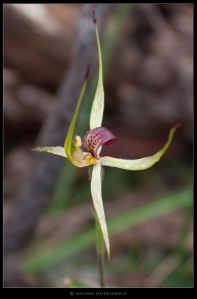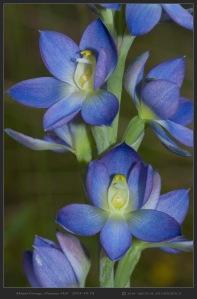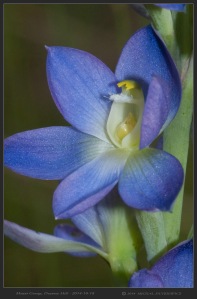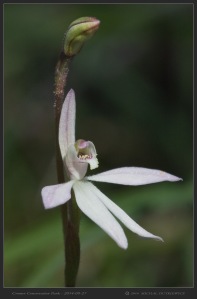




Thelymitra bracteata aka Large Bracted Sun Orchid, Leafy Sun-orchid
Working classification
Kingdom: Plantae
Phylum: Charophyta
Class: Equisetopsida
Subclass: Magnoliidae
Superorder: Lilianae
Order: Asparagales
Family: Orchidaceae
Subfamily: Orchidoidae
Tribe: Diurideae
Subtribe: Thelymitrinae
Lobethal roadside scrub verge – October 25th, 2014 – warm, dry conditions
Photos & Text: Michal Dutkiewicz
These were growing next to a roadside metal rail in, what at first sight, seemed to be very unpromising conditions. We had stopped the car to take photographs of an old brickworks that was just 50 yards or so down the scrub-covered hill from the road – I was stunned to see these amazing Orchids in quite a dense group. I didn’t know what species this was, because the blue Thelymitras confuse me, but Sheridan Ford said, on the Australian Native Orchids Facebook Page: “My guess is T. bracteata. I don’t think it is pauciflora as pauci only has 1-5 flowers. The giveaway for me is the large, prominent bracts, sharply bent column arms with toothbrush-like hair tufts and the robust habit of the plant.” Thanks Sheridan. Here are my other articles on Thelymitra plus some outside links you may find useful:
Rabbit Ears Sun Orchids In Profusion At Cromer Conservation Park
http://www.retiredaussies.com/ColinsHome%20Page/Orchidssa/Thelymitra/Thelymitra%20bracteata%20SA/Thelymitra%20bracteata%20SA09.htm
http://bie.ala.org.au/species/Thelymitra+bracteata






































